
Celebrate ten years of Urban Omnibus and support ten more years of fresh, independent perspectives on citymaking with a donation today!
Celebrate ten years of Urban Omnibus and support ten more years of fresh, independent perspectives on citymaking with a donation today!
Ask David Bragdon how he first became interested in transportation, and he’ll reply that he “always loved big things that move,” starting with the buses going down 2nd Avenue when he was growing up. At age twelve, his family moved from New York City to Portland, Oregon, where he’s spent a good part of his varied career managing efficient, economical, and sustainable ways to move both cargo and commuters around. After twelve years on the Metro Council, an elected body that represents and plans for Portland’s metropolitan region, former New York City mayor Bloomberg tapped him to run the Office of Long Term Planning and Sustainability in 2010, which is responsible for the implementation of PlaNYC.
PlaNYC made interagency collaboration a priority, working to integrate sustainability and resilience measures — cleaner air, more trees, reduced carbon emissions — into housing, infrastructure, parks, mass transit, and more. So Bragdon understands well the need to coordinate among branches of government with distinct priorities and different approaches to planning. That understanding will serve him well in his current role as executive director of TransitCenter, a New York-based organization that uses research, advocacy, and public programming to “spark innovations and support policies that improve public transportation for riders, businesses and communities” throughout the country.
Bragdon came to TransitCenter to transform it. It began as a non-profit spun out of the Port Authority in the late 1980s in order to provide tax-free commuter benefit programs to public transit riders (starting with the TransitChek voucher that evolved into a MetroCard option in 1997.) At a time when employer-supplied parking was effectively tax exempt, a coalition of policymakers set out to level the playing field. In 2012, TransitChek was sold to a private sector company, creating proceeds that Bragdon and his team are putting towards to TransitCenter’s social mission.
In the piece below, Bragdon outlines what a public transit agency might look like if it were designed from scratch to meet 21st century needs. His vision for the future includes useful history on why the infrastructure, financing, and governance of our regional transportation infrastructure are so fragmented. And it reflects his firmly held belief that “you can’t do good transit planning without an appreciation for land use planning.” With the Cuomo administration currently seeking to reinvent the MTA and with recent troubles at the Port Authority showing the limitations to regional cooperation under the current rules, the time is right for fresh thinking about how we plan, fund, and govern public transit, across political boundaries and in concert with other urban development priorities. —C.S.
In many ways, we have reawakened our sense of possibility for city life compared to the battle-hardened resignation that prevailed during the fatalistic days of the “urban crisis” a few decades back. But one major aspect of our urban experience that has only just begun its revolution is the way our transit and transportation agencies help us move around the city. Sure, New York City’s conventional transit system — its subways and buses — has largely recovered from its neglect and disrepair of the 1970s, thanks to steady efforts by its experienced and determined management and workforce. Yet we should aspire to something more than simply restoring a system to pre-1970s functionality. In addition to updating our physical infrastructure, it’s time that we update our governing institutions too.
Improvements to our transit system have become critical to the health of our city. As ridership soars, New Yorkers suffer more subway overcrowding seven days a week. On the streets our buses are among the slowest in the nation, lumbering along in traffic, stopping every two blocks while passengers queue up to count their coins to drop in the whirring slot. The greatest growth in intra-city travel demand is BTBNIM: borough-to-borough-not-involving-Manhattan, as well as intra-borough. These are the trips between Brooklyn and Queens, residents of Crown Heights trying to get to jobs at Maimonides Health Center or students from Flushing making their way to a community college class in Jamaica. They both represent the trips of the future and are the trips most neglected by our current transit system. While we need to improve our infrastructure to accommodate those trips with advances like bus rapid transit (BRT) along major arterials, we should also be cognizant of the benefits of other, less conventional forms of shared-use mobility, whether the innovation of bike sharing or the market revolution caused by technology-enabled, on-demand car services.
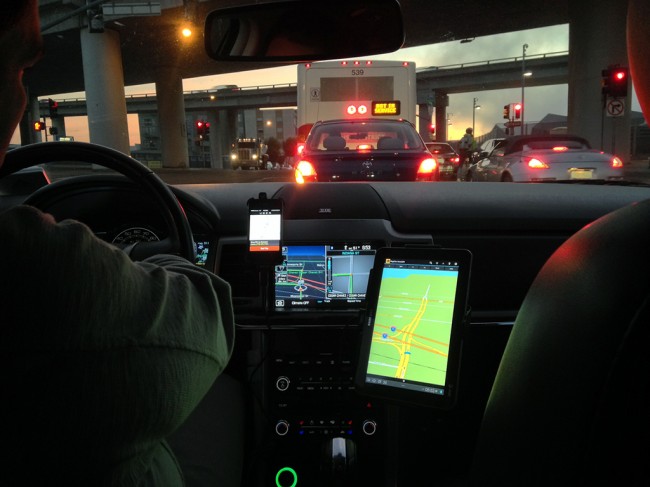
UberX Driver | Photo via Jason Tester
Despite the revival of our transit system since the 1970s, our transit agencies can’t perform everything we ask of them. One reason is physical: conventional transit can’t possibly go everywhere we want it to go all the time, even in a place as comprehensively served as New York City. But another reason is institutional. The MTA as we know it today is a supply-side entity: it provides a specific physical service, but it doesn’t yet intervene in shaping the “demand side,” in the way that airlines do by offering different levels of service and different prices at different times. (One exception is the MTA’s episodic creation of new demand in a “if you build it they will come” sense at Hudson Yards.) The MTA is an asset owner and operator, created in the late 1960s by Governor Rockefeller as a “holding company” to consolidate the ownership and operations of a mish-mash of public entities and private companies. It also served as a means of tapping proceeds from Robert Moses’s Triborough Bridge and Tunnel Authority for transit, but apart from that innovation it was not an instrument to influence transportation demand or respond to an evolving vision of residents’ overall mobility needs. It was and is an owner and operator of specific physical things.
The ability to transfer funding from road tolls to benefit transit was a huge accomplishment, amplified further nearly twenty years later when another governor finally heeded urban priorities and cashed in the proposed Westway mega-highway boondoggle and used the funds for a subway revival instead. Now, even more decades later, a civic group called Move NY is working on a comprehensive way to relieve traffic through equitable tolling and transit improvements.
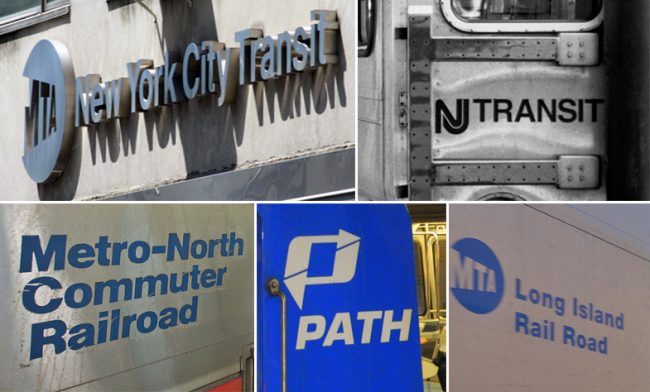
Clockwise from top left, photos via Remon Rijper, Aaron von Dorn, MTA, Parshotam Lal Tandon, MTA
But these instances of recognition — and action — of transportation needs that span multiple modes, whether by moving money among modes or creating physical connections between them, are the exception rather than the rule. For the most part, our agencies operate with only catch-as-catch-can collaboration, and are of necessity focused on operating the physical assets that they themselves own with the employees they employ.
The State’s consolidation of these various transportation entities into the MTA did not translate to integration. The MTA’s components, including the Long Island Rail Road (LIRR), Metro North Railroad (MNR), and NYC Transit, still operate mostly independent of each other, without common fare payment systems or operational coordination. What these agencies do have in common is that they are “operating agencies,” focused on the assets they own but little else. (Yes, even the word railroad is styled differently, with the LIRR “Rail Road” and MNR “Railroad.”) They have separate scheduling, separate labor agreements, and even separate payroll, procurement, and IT systems, though that is slowly changing. (NJ Transit and the PATH, on which New York depends to deliver a large portion of the workforce from New Jersey every day are another story involving another governor who has been in the news for a different transportation tale.)[1] None of these agencies has the time or wherewithal to focus on the overall and shifting mobility needs of their customers. They are focused just on their link in the chain with no sense of how the entire chain could be connected, link by link.
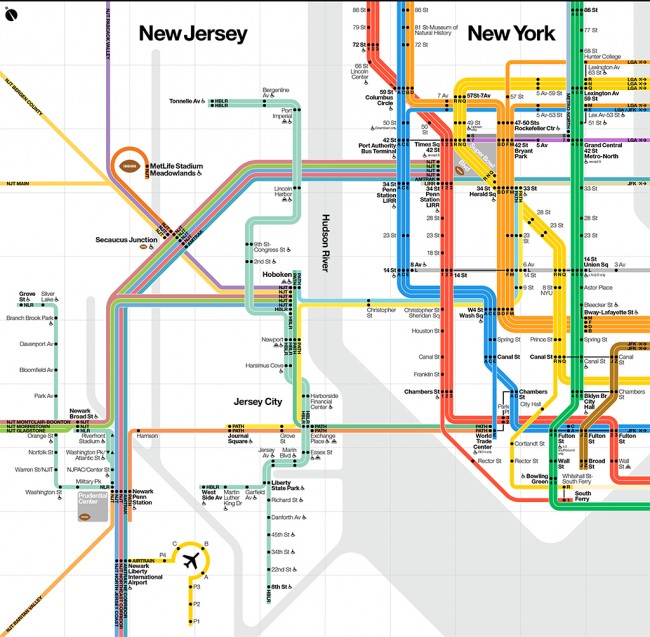
Diagram via NJ Transit
It’s a tough job. Compare New York’s Metropolitan Transportation Authority with other institutions in our society: how many airlines, restaurant chains, or online catalog companies serve eight million customers per day by relying on physical assets and operating practices that may be a hundred years old? How many organizations would be able to deliver reliable service by depending on fickle, remote “investors” (a.k.a. the State Legislature and Governor in Albany) who won’t allow management to develop a predictable capital maintenance plan longer than two years? Would there be an Amazon if its equipment procurement practices were narrowly constrained by federal regulation? And how innovative would Apple’s workforce be if it were bound by rules set more by tradition and political accommodations than by customer preference or rewards for efficiency and productivity?
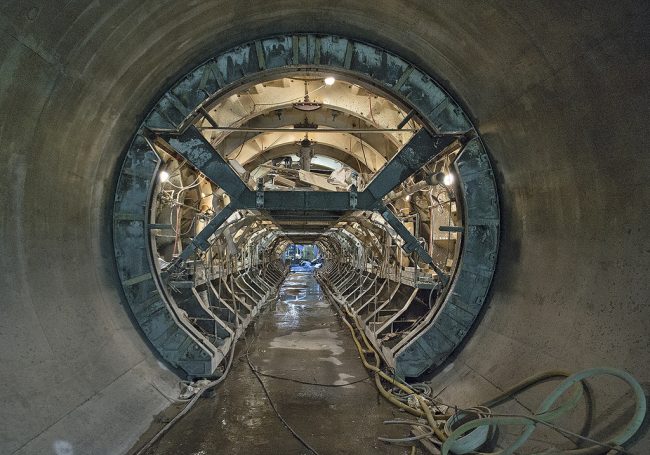
The Second Avenue Subway under construction | Photo via MTA
The distinction between public and private, e.g. Metro North vs. New York Central Railroad, isn’t the determining factor. Rather, it’s that large, public sector monopolies tend to produce a routinized, commodity-like product, so their business practices are not attuned to the demands of competition or customers. The implicit message is: if you’re on the corner at 7:32am when we show up, and you’re clutching the exact standard fare we have set, then we will take you the direction we are going, at our speed, stopping every couple of blocks, one of which may be near someplace you want to go.
But history is not destiny. In addition to being the operator of its own assets, a transit agency of the future could become a merchant of mobility, instead of “the bus company” or “the railroad company.” Its core comparative advantage will endure: the fixed, scheduled routes that are highly efficient in dense corridors where large numbers of people move in relative unison. But the way we plan, finance, and operate those services — and moreover the way they interact with other forms of mobility and the consumer — will change. For example, the City of Helsinki has announced that to supplement its excellent tram, bus, and subway network, it will use information technology to enable residents to pay for bike share, car share, and other forms of mobility with a single system. Sure, technology makes it possible — but the public agency’s willingness to use that technology to link its own assets to private assets is what makes this new offering happen.
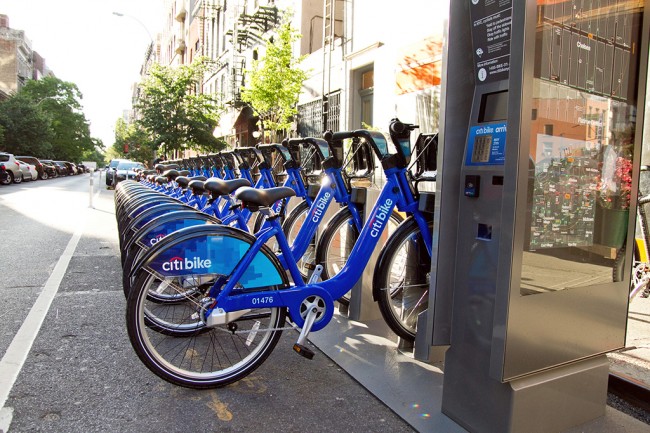
CitiBike, New York’s bikeshare | Photo via Robyn Lee
As merchants of mobility, agencies need to affiliate with other entities to offer the consumer more options across modes. Early research by NYU has found that the busiest bike share stations are the ones near subway stations, strong circumstantial evidence that bike share is a complement to conventional transit, not a competitor. Likewise, some academic evidence found that the “dollar vans” that operate informally in areas of Brooklyn deficient in conventional transit are filling a “first mile” or “last mile” function, connecting people to the larger system when they begin or end their trip at some distance from the main lines. The transit agency of the future would facilitate these connections by erasing some of the current financial and informatic distinctions between fixed route, scheduled public transit, and those forms of mobility that are quasi-private, such as bike sharing or ride sharing.
If the MTA is currently a holding company consisting of wholly owned operating divisions, re-imagine something that is an even more diversified and loosely structured holding company. The future MTA would have a capital planning arm which would coordinate its investment decisions with the land use and market conditions of the territory being served. It would have a regional, capital plan that projected 20 years into the future, with five-year check-ins, and dedicated funding that couldn’t be raided — just the way the federal Highway Trust Fund was held sacrosanct for decades after Eisenhower, enabling the orderly construction of 40,000 miles of interstates regardless of turnover of administrations or change of control in Congress. Rather than being perceived as an orphan of the state government — which, in reality, supplies it with very little money — the transit agency should have more regional independence, reflective of the fact that nearly all its revenue comes from riders and from taxes generated in the metropolitan region, not from the state government. With its political life tied more closely to the region it serves, it would be better able to coordinate with the municipal government, whose policies on street safety, economic development, and housing should be goals shared by the transit agency.
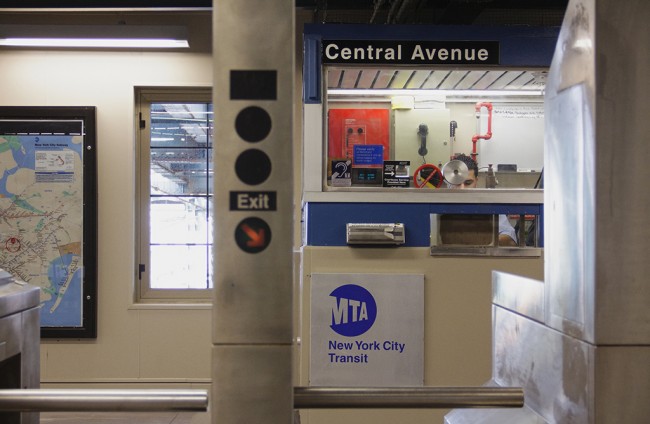
Subway booth in New York City | Photo via Michael Tapp
The transit agency of the future would not only have a broader sense of mission, but would be freer to adopt more modern management practices that will help it deliver. Internally, managing the system means greater integration of multiple functions. The MTA recently reorganized to manage the system by lines, instead of station by station in districts. This move represents progress towards thinking holistically about the system. In the future, line managers would manage teams of transit planners and engineers, who would be buttressed with data analysts and customer service representatives. The customer service representatives would constantly feed the lines with the latest on capacity, riders, or any disruptions, so that the line team could respond appropriately. Customer service representatives would be social media experts, knowing how to anticipate any potential disruptions from rider check-ins, even before customers themselves sense it. Similarly, the current MTA team is moving toward consolidation of IT functions, to improve efficiency and reduce cyber-security risks across all operating units.
The new transit agency would use technology to connect consumers with new forms of mobility that supplement the conventional fixed route transit services. Service in less dense suburban settings or a short trip within a neighborhood to a corner market could be served with the most appropriate vehicle type, like a bike or a SmartCar, rather than the current binary choice of either a totally private car (expensive for the individual and society) or a bus that shows up every 30 minutes (perhaps not the most cost-effective technology for the context, with over 40 seats and an operating cost well north of $100 per hour).

The MTA’s newest technology include countdown clocks, bus trackers, and on-the-go digital kiosks. | Photos via Flickr, MTA, Control Group
In the future, information about all available routes would be aggregated into a single interface, with real-time location of each vehicle (closest buses, train lines, next ferry; available bikes, scooters, cars in the shared docking station, etc.), weather, and any service disruptions. The info would be immediately available all the time, either through smartphone apps or through screens projected on the sidewalk in front of the entrance or on the wall of a public building. The days of standalone weather and transit apps will end. The transit agency would make sure that all mobility services would be available through this single interface, even if it doesn’t design the interface (it likely won’t). If one does enter the system through a car or bike share station, or a transit station, a single trip is accessible via the same card. Prices would reflect the varying underlying costs of the services as well as being dynamic in response to demand. Fifty years ago, when people imagined transformative transportation “technology,” they imagined levitation devices strapped to our automobiles or even our backs — who would have predicted that a device the size of a deck of cards resting in your palm might end up having the more transformative impact? But it has.
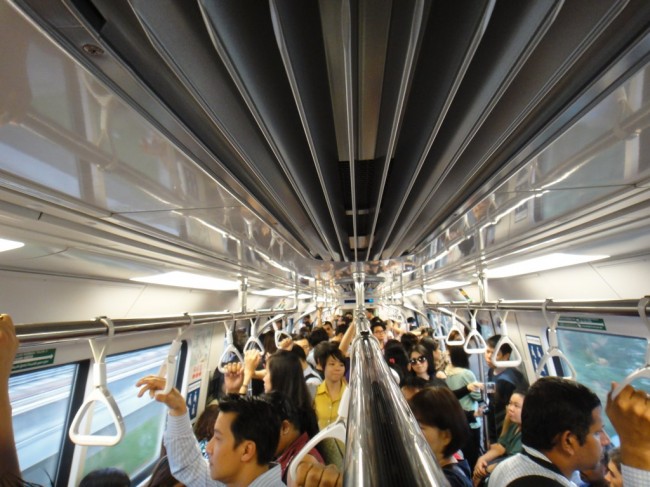
The Singapore MRT | Photo via Rajesh Pamnani
While large-scale, routinized functions like transporting millions of people over the same routes every day are necessarily performed by hierarchical bureaucracies — there’s only so much improvisation you’d want in an operation that should assure safety by adhering strictly to rules — there is room to introduce elements of creativity and competition in the industry. Like many European and Asian countries, the U.S. could do far more than it does in soliciting external operators to run parts of the system. Those providers should be held to high standards for punctuality, working conditions, and compensation for labor, customer service, and cleanliness — at risk of not having their contract renewed at the end of the fixed period, in the same manner that Singapore’s MRT or European systems already do. Those examples from what would accurately be called far more “socialized” countries than the U.S. proves that contracting doesn’t need to be about a race to the bottom for workers’ wages or enriching shareholders at the expense of public interest — it’s a matter of incentives and an environment for innovation. Just as Southwest Airlines proved it could squeeze more operational productivity out of a 737 than the complacent old-time airlines could, or just like the UberX drivers who discovered that water bottles and magazines would improve customer satisfaction, inviting competition into the provision of public transit has the potential to benefit both providers and consumers.
With so many crossovers in private operations, public data, and private uses, our future transit agency would blur the line between public and private sectors in a way we haven’t yet pioneered. The challenge is one of governance, bureaucratic turf, organizational development, planning, and public policy, not simply one of technology. Technology is just a tool, and our human institutions can either make use of it or try to ignore it. It may seem optimistic to think we could reinvent how urban transport is conceived and delivered. But other large organizations have successfully broadened their self-conception of mission to achieve more: what used to be the “Public Works” (a.k.a. “sewer”) Department focused on its own pipes, pumping stations, and treatment plants is now an environmental protection agency concerned about how to handle rainfall, wherever it lands. The City Department of Transportation has become a steward of public spaces in dense urban areas. The Parks Department has adapted its role from owner of playgrounds and tennis courts to steward of children’s health and leader in the fight against obesity. Above all, we have all upped our game in terms of what we want a city to be. We can up our game in transit and its future as well. Then transit will do the things it can do in addition to moving us from place to place: it will help make those places more economically prosperous and environmentally sound.
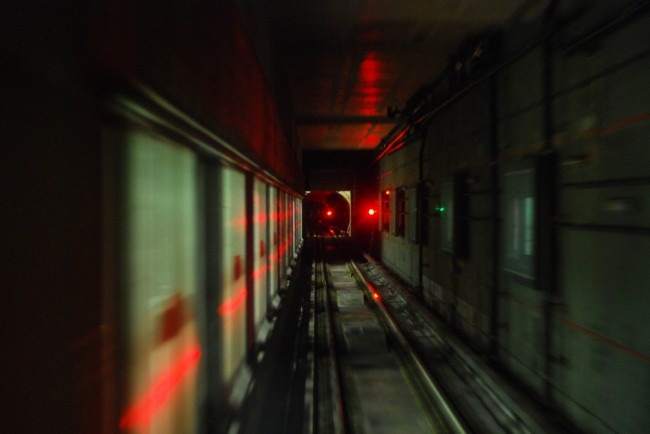
Photo via Daarwasick
NOTES:
[1] NJ Transit is a public transportation corporation operated by the State of New Jersey. The PATH stands for Port Authority Trans Hudson and is operated by the Port Authority of New York and New Jersey.
The views expressed here are those of the authors only and do not reflect the position of The Architectural League of New York.
Comments